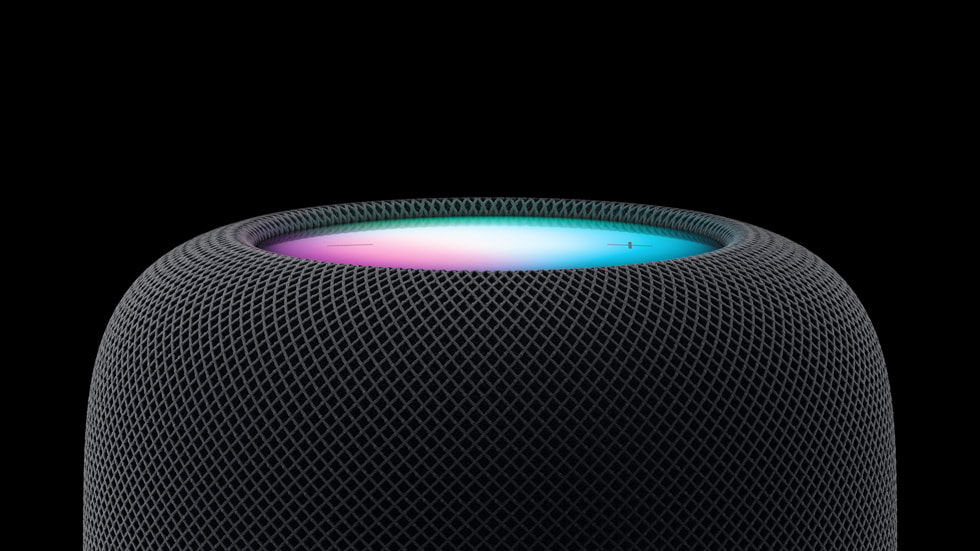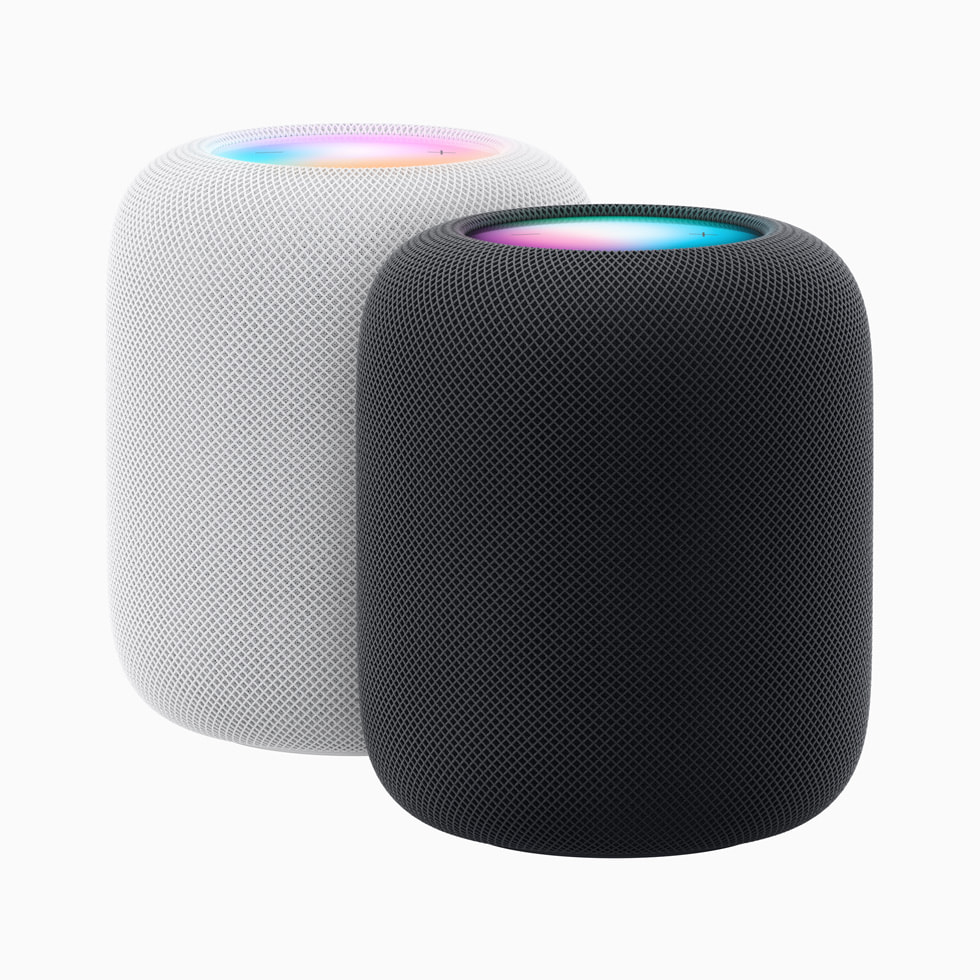

Apple today unveiled HomePod (2nd generation), its powerful smart speaker. HomePod offers advanced computational audio for a groundbreaking listening experience, including support for immersive Spatial Audio tracks.
Users can now create smart home automation using Siri, get notified when a smoke or carbon monoxide alarm is detected in their home, and check the temperature and humidity in a room — all hands-free. The new HomePod is $299 and is available to order online and in the Apple Store app starting today, with availability beginning Friday, February 3.
HomePod is available in white and midnight, a new color made with 100 percent recycled mesh fabric, with a color-matched woven power cable.


As did the original HomePod, the new version delivers excellent audio quality. A custom-engineered high-excursion woofer, powerful motor that drives the diaphragm a remarkable 20mm, built-in bass-EQ mic, and beamforming array of five tweeters around the base all work together to achieve a powerful acoustic experience. The S7 chip is combined with software and system-sensing technology to offer even more advanced computational audio that maximizes the full potential of its acoustic system for a groundbreaking listening experience.
The new HomePod is 6.6-inches tall and weighs 5.1 pounds, compared to 6.8-inches and 5.5 pounds for the first-generation model. Both models are 5.6 inches wide. The new HomePod also has two fewer tweeters and microphones compared to the original model. The original HomePod was equipped with the A8 chip from the iPhone 6, while the new model has the S7 chip from the Apple Watch Series 7.
With Sound Recognition, HomePod can listen for smoke and carbon monoxide alarms, and send a notification directly to the user’s iPhone if a sound is identified. The new built-in temperature and humidity sensor can measure indoor environments, so users can create automations that close the blinds or turn on the fan automatically when a certain temperature is reached in a room.
By activating Siri, customers can control a single device or create scenes like “Good Morning” that put multiple smart home accessories to work at the same time, or set up recurring automations hands-free like “Hey Siri, open the blinds every day at sunrise.” A new confirmation tone indicates when a Siri request is made to control an accessory that may not visibly show a change, like a heater, or for accessories located in a different room. Ambient sounds — like ocean, forest, and rain — have also been remastered and are more integrated into the experience, enabling customers to add new sounds to scenes, automations, and alarms.